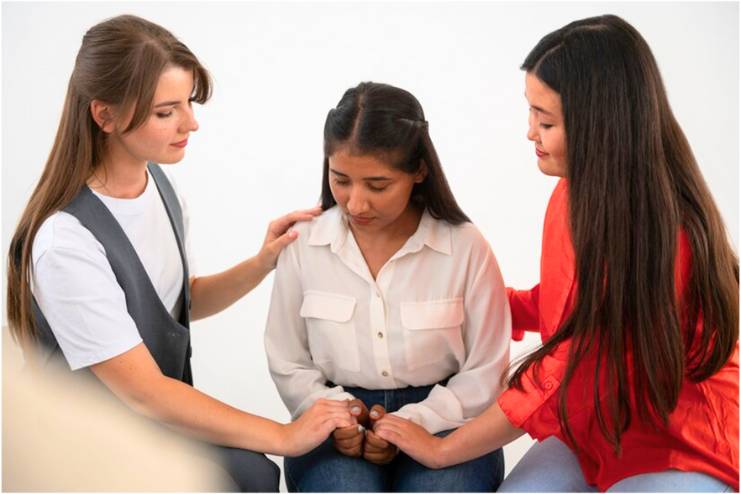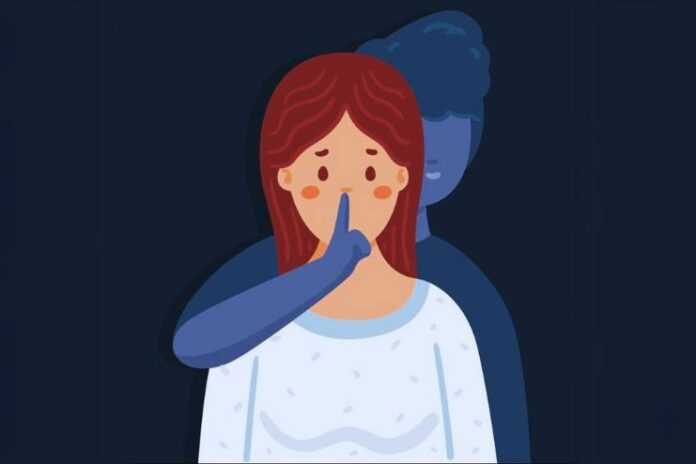Affiliate Disclaimer
Some links in this article are affiliate links. We may earn a small commission if you make a purchase through these links, at no extra cost to you. We only recommend products we find useful to our readersYou may be wondering how to help someone in an abusive relationship. The process is complex and often dangerous, as abuse can be manipulative and coercive. Victims often feel trapped, isolated, and unsure of how to escape safely. Recognizing these challenges is key to offering practical support.
Victims may feel fearful, unsure about how to break free, or uncertain whether they can trust others. To assist them, providing emotional support, connecting them with resources, and respecting their autonomy are essential. By recognizing the warning signs of abuse and gently guiding them to shelters, hotlines, and legal assistance, you can empower them to safely escape and begin their healing journey.
Recognizing the Warning Signs of Abuse

Abuse comes in many forms, such as physical violence, emotional manipulation, and psychological control. Identifying the signs of abuse is critical to providing effective support.
Some common signs of abuse include:
- Physical Injuries: Bruises, cuts, or unexplained injuries
- Verbal Abuse: Continuous insults, threats, or humiliation
- Isolation: A pattern of severing relationships with friends, family, or colleagues
- Controlling Behaviors: Controlling access to finances, communication, or movement
- Emotional Distress: Fear, low self-esteem, and anxiety, particularly about the abuser
Recognizing these signs early gives you the opportunity to intervene and guide your loved one toward safety.
Shelters: A Safe Haven

Domestic violence shelters are often the first line of defense for someone escaping an abusive relationship. They provide secure, confidential locations where victims can receive immediate protection and support. Shelters offer a range of services, including food, shelter, counseling, and legal assistance.
To find a shelter, you can refer to resources like the National Domestic Violence Hotline or search for online directories. Shelters prioritize safety by maintaining confidentiality and ensuring victims can access the help they need.
Hotlines: Immediate Support and Guidance
Hotlines play a critical role in offering immediate support to victims. They are available 24/7 and provide confidential assistance, crisis management, and safety planning to help victims escape dangers from an abusive relationship.
The National Domestic Violence Hotline (1-800-799-SAFE) is one of the most well-known resources. It offers guidance on safety, legal options, and shelter referrals. Hotlines provide essential support to victims and offer advice on how to leave an abusive relationship safely. They also connect individuals with the help they need to break free.
Accessing Professional Support: Legal, Emotional, and Financial Assistance

Access to legal support is vital for the victims of domestic violence. Restraining orders, legal counseling, and child custody guidance help victims feel safer as they navigate the process of leaving an abusive relationship. Therapy, counseling, and peer groups provide emotional support to rebuild their confidence and self-esteem.
Financial resources such as the Allstate Foundation, which offers financial literacy tools, or emergency financial help from the National Domestic Violence Hotline, can assist with housing and other needs. Programs like Savvy Ladies and Dress for Success also offer financial education and career development opportunities to empower survivors.
These services give victims the tools to regain independence and recover from their experiences.
Helping Them Plan a Safe Exit

A safety plan is an important step in assisting a loved one to leave an abusive relationship. Work with them to create a plan that minimizes risks.
Some practical steps include:
- Packing of Essential Items: Identification documents, financial resources, and important documents
- Discreet Preparation: Gather these items when it is safe to do so, ensuring they are hidden from the abuser
- Support Network: Involve trusted friends, family members, or professionals who can provide shelter or help with transportation
Have a clear and well-thought-out plan to reduce the risk of harm and smooth the transition to safety.
Being Supportive Without Pushing

While it is crucial to help a loved one leave an abusive relationship, it is equally important to be supportive without overwhelming or rushing them. Here are some tips on how to be a supportive ally:
- Listen without Judging: Let them talk their way out without giving unsolicited solutions unless they ask.
- Be Patient: Understand that leaving an abusive relationship is a process that takes time. They may need space to prepare mentally and emotionally.
- Acknowledge Their Feelings: Validate their emotional response and let them know that their feelings matter.
- Consistent Support: Reassure them that your support is available whenever they are ready to reach out.
Conclusion
Helping someone escape an abusive relationship is a delicate and complex process that requires empathy, patience, and a mix of practical and emotional support. By recognizing the warning signs of abuse, connecting them to shelters, hotlines, and legal services, and assisting them in developing a safety plan, you can empower them to break free from domestic violence.
Be there for your loved one by offering emotional support without pressuring them to act before they’re ready. When you remain consistently present, they will know they can rely on you during this difficult time.
References
- https://www.goodrx.com/health-topic/mental-health/how-to-help-someone-in-an-abusive-relationship
- https://nationalwomensshelternetwork.org/
- https://www.goodrx.com/well-being/relationships/financial-assistance-domestic-violence-victims
- https://www.lsc.gov/our-impact/publications/other-publications-and-reports/how-legal-aid-helps-domestic-violence
In this Article















